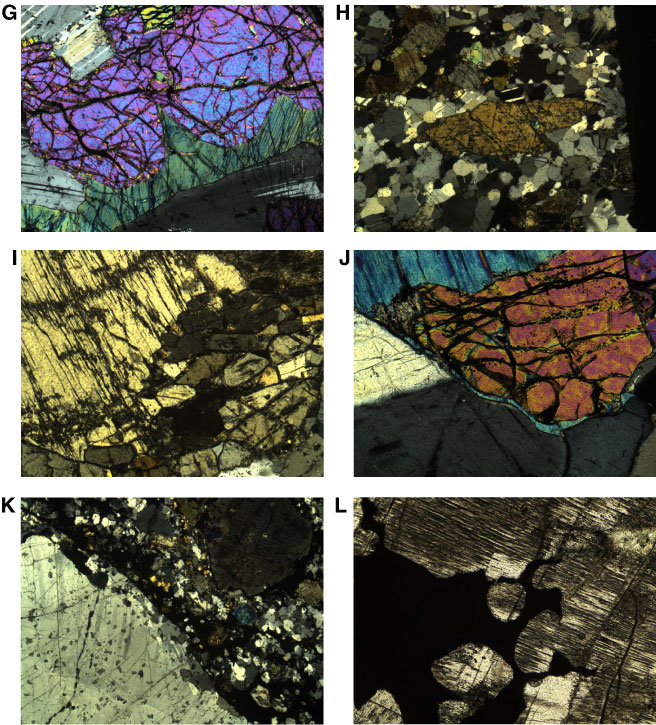
Figure F158 (continued). G. Olivine separated from plagioclase by clinopyroxene with highly concave shape toward olivine, perhaps indicating corrosion of olivine, as a possible process for generating smaller, optically continuous olivine grains (Sample 305-U1309D-250R-4, 17–20 cm) (cross-polarized light; FOV = 5.5 mm). H. Elongate orthopyroxene grains enclosed in a matrix of neoblastic plagioclase (Sample 305-U1309D-269R-1, 3–5 cm) (cross-polarized light; FOV = 5.5 mm). Note the absence of any orthopyroxene neoblasts. I. Tabular-equigranular-shaped neoblasts of orthopyroxene around an orthopyroxene porphyroclast (Sample 305-U1309D-269R-1, 3–5 cm) (cross-polarized light; field of view = 1.75 mm). J. Delicate film of clinopyroxene between olivine and plagioclase, continuous from a larger clinopyroxene grain, and changing to orthopyroxene on the right of the picture (Sample 305-U1309D-222R-4, 82–84 cm) (cross-polarized light; FOV = 1.75 mm). K. Contact of an oxide-rich gabbro with an anorthositic gabbro (Sample 305-U1309D-270R-3, 93–95 cm) (cross-polarized light; FOV = 5.5 mm). The local contact zone is marked by an enrichment in oxide. Note a layer of neoblasts adjacent to the plagioclase porphyroclast in the contact zone to the oxide gabbro and very small neoblasts of plagioclase in the oxide gabbro. L. Fe-Ti oxide penetrating along what were possibly former neoblast boundaries of clinopyroxene (in microcracks), partially resorbed and followed by recovery of the entire clinopyroxene grain (Sample 305-U1309D-110R-3, 46–49 cm) (cross-polarized light; FOV = 5.5 mm).

Previous | Close | Next | Top of page